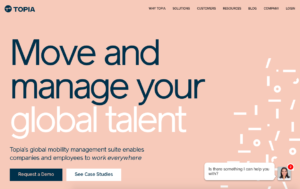After coming through the worst of the recent COVID-19 outbreak, China seems to be experiencing mild success restarting its economy and is being looked to as a positive leading indicator for the rest of the world, including in the US where experts say unfortunately the worst is still 2-3 weeks away. The reality of COVID-19 on the US economy and US businesses remains serious and should not be underestimated. For companies big and small, it’s likely been an incredibly tough week, and in those circumstances, it is hard to see beyond what's just in front of you. But as well as making tough decisions, in times of crisis, leadership requires you to have optimism and hope and an ability to confidently envision what the future holds.
“Please don’t sell this crisis back to me”
Until about a year ago, I was living in China leading digital marketing for Nike’s Greater China (mainland, Taiwan, Hong Kong) business. I spent a total of three years in China with my then fiance and now-husband. People often ask us what life was like living and working in a place that for a lot of people feels so foreign, and my common response is that I now feel like I have the cheat codes for the future of marketing everywhere else. As a marketer in the digital era, life in China is like drinking from a firehose - every minute of every hour of every day.
Stanford economist Paul Romer once famously stated, “A crisis is a terrible thing to waste.” I’d held a hunch that Alibaba and Tencent are informing marketing strategy for the next decade here, but seeing new behaviors emerge during shelter-in-place, I now think the stealable tactics may extend even further. Don’t get the wrong idea and this tragic global pandemic shouldn’t turn into a marketing brief. But now more than ever before, it’s the time to LISTEN to your employees, customers, consumers and communities, LEARN from them, and RESPOND with what might end up being some of the greatest innovations of our time, think Alibaba post-SARS in 2003.
This week and last, I did just that via check-ins or comforting messages from former colleagues and friends. These quick catch-up conversations brought me back to all the ways Internet-life in China was somewhat of a precursor to what is happening here and now. So here are my 5 learnings from China that may “stick” in a current and post-COVID United States:
1) Double-down on social listening and community engagement, and recalibrate infrastructure to be nimble to your customer’s new reality.
During a recent evening reflection, my husband and I talked about how our life during this shelter-in-place period feels familiar to our first winter in Beijing. In the fall of 2016, Beijing issued its first Red Alert––the highest pollution warning––sparking school closures, odd-even driving restrictions, and similar stay at home measures. That winter was the worst pollution season ever on record for Beijing. My colleagues and I would cringe every time we were forced to cancel an outdoor Nike Run Club or Nike Training Club event, flushing tens of thousands of marketing dollars down the drain.
But during that time, an interesting societal behavior emerged in Beijing, which internally at Nike we lovingly called “DEAR” (Drop Everything And Run): Any time the real-time air quality index (AQI) reading would drop below 50 - a “good” AQI, akin to L.A. on an average day - people would flood the streets and parks on bikes, on foot, with kids and sports equipment in tow, no matter what time of day or day of week it was. Some innovative and empathetic startup companies even started officially allowing a “fresh air leave” benefit.
This newfound appreciation for the outdoors may certainly be what’s in store for us this summer, but if future pandemics come as frequently as some experts predict, this ‘seize the moment’ way of life could also become our new normal. For startups and scale-up companies of today, how does your current brand platform and customer journey map or dashboard support the new reality for customers? Look for opportunities where you can inject flexibility and authenticity into the foundation of your brand so as to support our shifting sense of normal for today and tomorrow.
2) Explore ways to enable a more customer and front-line friendly service experience.
It’s pretty widely known that China’s mobile POS or proximity mobile payment penetration rate far exceeds the rest of the world, largely due to the leapfrog effect from their never having meaningfully adopted credit cards. Led by tech giants Alibaba (Alipay) and WeChat (WeChat Pay), China’s mobile payment adoption rate is conservatively estimated to exceed 35% of the population, compared to ~8% in the U.S. [Statista].
In this vein, I received an email yesterday evening from a local shop in SF where I take my dog for grooming, alerting customers that effective immediately, all locations are going cashless in an effort to protect the health and safety of their teams and communities. If that is a broad change happening in more than just Mission Bay––and I have a hunch it is––mobile payment adoption may accelerate to catch up with the amount of disruption to consumer and retailer experience this phenomenon has caused for China.
3) Every moment is a content moment. Prioritize timeliness and authenticity over production value.
Cord-cutting may finally happen en masse, including more frugality around cable media in general, which is the dominant market trend in China.
The reality is, as those same companies run up against a shortage of original programming, and live events and IRL meetups are simultaneously eliminated, more than ever before, we will all miss… the fear of missing out. With screen times up across the board, livestreaming brings that feeling of FOMO back to an at-home world, manufacturing digital flash mobs and injecting a false sense of scarcity to things like flash sales, driving impulse buying and online shopping as a highly social, leisure activity. Beyond livestreaming, as consumers are spending more time on screens, there is more direct load to brand sites than ever before. Refresh your owned platforms to ensure your content is up-to-date and engaging to both your customers as well as investors.
We're already seeing individuals and communities coming together through live stream and video in grassroots ways. This past Saturday, DJ D-Nice’s Instagram Live story peaked at 100k+ viewers, as he spun nine hours straight for the likes of Michelle Obama, Oprah, Diddy, Ava DuVernay, Bernie Sanders, and Joe Biden, who had all stopped by “Club Quarantine.”
In China’s major cities, public gatherings are heavily regulated (all the time). So online hangouts are ubiquitous and more sophisticated. Alibaba’s TMall has a livestream session, called “2nd Floor” every night that’s meant to feel like gathering your friends and going to the mall. Different brands sponsor it each night. As shelter-in-place continues, new and more sophisticated solutions -- driven by brands and platforms -- will arise that might take a page out of China’s playbook. The platforms that successfully combine the best aspects of OTT + innovative commerce (ex. iQiYi’s shoppable hit shows) or livestreaming + sophisticated e-commerce tools (ex. Alibaba’s Taobao) will surely be the winners.
4) Build a tight community by selectively working with the right influencers who can lead authentic conversations for your brand.
If you didn’t read our previous blog post about the rising cost of influencer marketing, you should. KOL (Key Opinion Leader) marketing - as it is known in China - has been an ever expanding bubble over the course of the last few years, and every day I worked there I kept thinking it would burst. It didn’t. The market is flooded with so many KOLs, you could easily think that brands and paying companies have all the bargaining power. However, it’s the opposite.
As the number of KOLs increases, so does the specificity of the niches they cover, providing brands with a very detailed level of targeting (especially among micro-influencers and those with even smaller yet highly-engaged audiences). As a way to increase their enterprise marketing offerings, the major platforms (Baidu, Alibaba, Tencent) have formed or struck up exclusivity deals with mini conglomerates of KOLs called Multi-Channel Networks (MCNs) to offer up to brands as an integrated feature of their ad targeting suite.
Just as we are starting to see here in the US, better targeting and better tools means higher cost of acquisition. As things like the California Consumer Privacy Act come to the forefront and third party cookies become a tool of the past, it is yet to be seen whether the major platforms here will unionize and command more top-down control of the nascent U.S. version of MCNs and the landscape at-large, folding it in with their already growing power. But on the supply side, one thing we can be certain about is the appeal and flexibility of an influencer or KOL existence, and as external forces (ahem, quarantine) shine a light on the perks of a flexible at-home schedule, we may just see an influencer economy bubble that mirrors China’s.
5) Revisit your privacy policies now as guidelines and mindsets around community engagement shift dramatically and quickly.
In true West fashion, this last one is more of a provocation, but is worth taking a moment to dive into what this means for your business and your community. It’s no secret that privacy is less of a concern amongst individual consumers in China, (especially when combined with the value of convenience and entertainment above all). Contrast that mentality to here, where most would argue that GDPR/CCPA are an optimistic step in the right direction. How many people have taken action using these new tools at their disposal, and how many average citizens are even able to interpret the .csv file that they receive when they request their data from a company?
It seems that people will always make concessions out of a need for convenience, value, and now safety, and will continue to do so even more. As you navigate your brand through these changing times, take appropriate pauses to check those policies - they are after all, part of your brand. Don't wait for your consumers to demand policies from you, be in the driver’s seat and, as best as possible, set the tone yourself.
As travel procedures implement health screenings and workers at larger companies ask questions like, “Will all employees be tested before we are allowed back to the office?” perhaps a bit of that same laissez-faire approach to data privacy is allowed to enter our minds. We are having to reckon with issues at an individual and an organizational level that we never have before, and with every “so-and-so got tested” and celebrity who posts from their quarantine bed, I wonder if this new level of openness and authenticity might be our new normal?
More thought starters from China:
- Gaming and Esports - The number of mobile gamers in China is almost double the population of the United States. Here, numbers may spike as more “casual” gamers will spend more time exploring platforms and app stores.
- Delivery - By far the thing my husband and I miss the most about China (industry titan Meituan Dianping even has social features that allow you to see and order the same lunch as your favorite influencer) delivery is picking up in a big way across the United States. Catalyzed by COVID-19, on-demand or scheduled delivery will become even more popular and productized as brands provide more flexible options to deal with higher demand.
- Social Commerce - China’s S-commerce industry already sits at 2 Trillion CNY, and includes popular features such as team buying and commerce-enabled chat groups. Here, more people are feeling compelled to assist others and have time to spend turning hobbies into side-gigs, which will require more sophisticated social commerce tools to power.
Nostalgic for the Future, Realistic About the Present
In a moment of work from home despair earlier this week, I took to social media to listen, learn, and respond, and I was greeted by photos of friend gatherings in Shanghai and Beijing - in the outdoor shopping villages, in the parks, together at hotpot. Many of the posts featured bicycles, or fresh kicks, or sweaty, smiling faces. It was an uplifting moment for me, as I realized the new sense of appreciation we are collectively going to have for all sorts of things that just three weeks ago we all probably took for granted. I responded to a friend’s post to ask if life there was getting “back to normal,” and she responded with a mountain of insight about turning business back on. It was a good reminder - don’t just allow CNN to play all day in the background as you navigate remote work life; phone a friend or colleague in China to hear what it’s like on the ground. You might get a surprise jolt of optimism out of it.
-Stacy Tarver Patterson, Managing Director, West





















